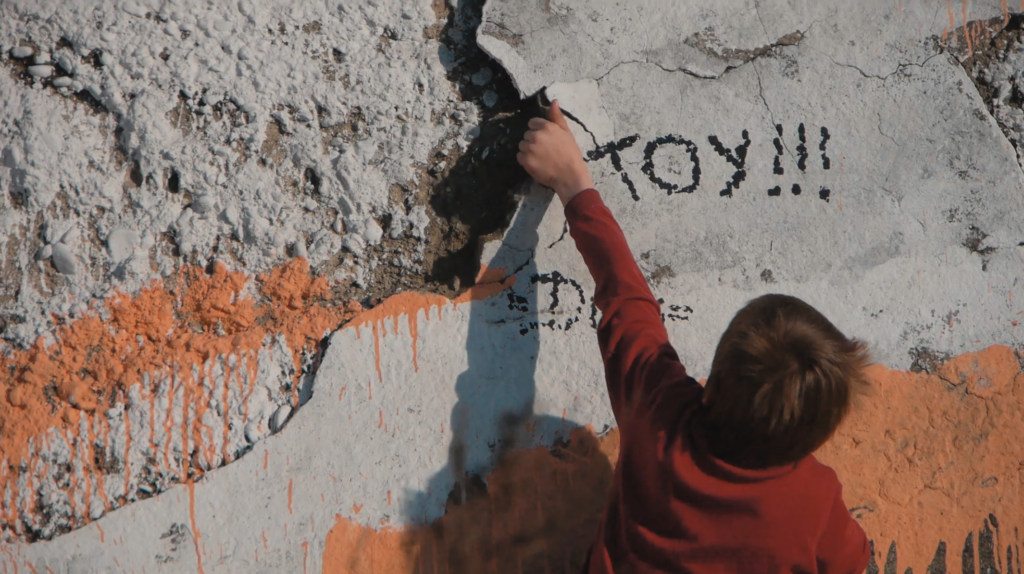
The playground is a nerve-wracking place. There are a lot of assholes. We fight a brotherly fight but it’s nothing serious. Sometimes we beat each other up. We train ourselves for real life and we’re real tough. – Sanyi
Hungarian intermedia artist and filmmaker, Dávid Mikulán, remembers the day in 2011 when he first saw three kids climbing through a fence on a bridge. Since the age of twelve, Dávid has done circuits on the streets of Budapest on his skateboard with camera in hand. While attending the Hungarian University of Fine Arts, he continued to indulge in this practice, photographing and filming the people that caught his eye on his journeys through the city. After a while, the boys he had photographed came up to him, fascinated by his skateboard. Dávid says that: “Skateboarders hang out together no matter what their age – the younger ones and older kids together. It’s a close network. There’s a certain trust.” It was normal for brothers, Victor and Sandor, and their friends, to have lots of unsupervised time to roam the streets, making up games, causing mischief, and generally just having the time of their lives, letting their imaginations run wild and free. Dávid and the boys lived in the same neighborhood and soon they became fast friends. Sanyi was only eight at the time and Dávid would end up filming him and his family – grandmother, mother, father, and three kids, all living together in a thirty square metre flat – for the next decade.
Bálint Révész is also a Hungarian artist and filmmaker. He’s the founder of London-based Gallivant Film and teaches at ELTE and METO universities in Budapest. In 2017, he attended the end-of-year diploma show at the University of Fine Arts where he encountered the short experimental street documentaries that Dávid had been making and promptly fell in love with the material. Bálint contacted Dávid and persuaded him that they should work together on making a feature-length documentary about Sanyi and his friends and family. They filmed for another six years until Sanyi reached the age of twenty-one. With Bálint’s participation as a co-director and producer on the project, producers Viki Réka Kiss, András Pires Muhi and Victor Ede picked up the project and the film started to receive some robust funding from various entities, including CNC, ARTE France, HBO and more. KIX will have its festival premiere this spring and will certainly instigate many conversations about the risks, responsibilities, and various moral quandaries inherent in making a longitudinal portrait of boyhood, and all that that commitment entails – particularly when unexpected tragedy hits.
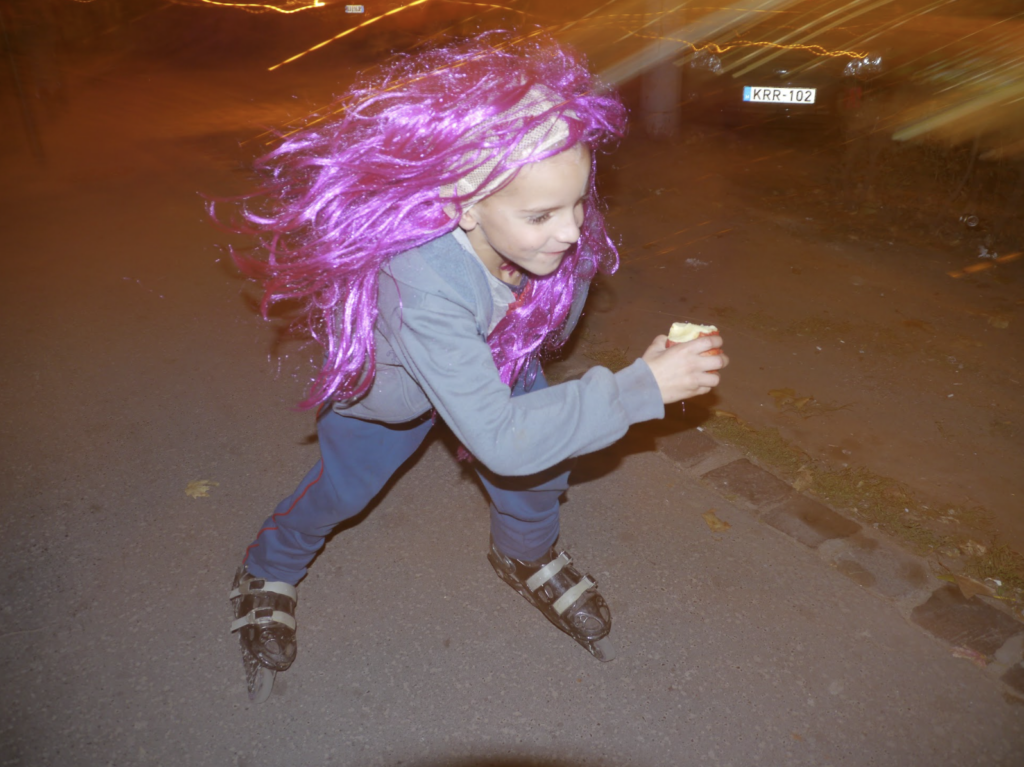
Pamela Cohn (PC): When you first met the eight-year-old Sanyi, Dávid, what was it about him or his circumstance that resonated with you?
Dávid Mikulán (DM): These kids I met when I was twenty-one and still in school myself were rural kids in a sense, even though we all live in the city. What I mean is that I found that they weren’t just copying things featured in the media. They were the inventors of their own games. If you don’t have a PlayStation at home and the parents are away working, you go outside and have fun with your friends and that was their situation. Sanyi and Victor, his older brother, spent portions of every day without parental supervision. The streets in Budapest have lots of playgrounds and stuff like that. It’s very romantic to play football in Boráros tér, the square where we met. Aesthetically, it’s nice but it’s also very dirty and can be a very rough zone. I eventually met the whole family. It became a regular routine where we would “babysit” the kids because the mother knew and trusted us to look after them since, even to this day, she works three jobs to support the family. The creativity coming from these kids was stronger than some of what I was encountering in art school. Most of the time I just followed them and from time to time would bring crayons, games, art supplies. We also bought them skateboards. We even called ourselves “Fax Csapat”, an artist group whose mission was to bring back public spaces to the people with “Art and Sports”! [laughter] It was really beautiful when they were young. When they became teenagers, a lot changed.
PC: Sanyi does exude a lot of charisma, even when he’s a little kid. His voice is weathered and rough. He takes on the persona of a little gangster, full of bravado. It’s such ripe terrain for an artistic exploration where the real world and a pretend world constantly collide in order to make life bearable. When and how did your commitment to documenting this long-term become apparent to you?
DM: During those younger years of mine, I was basically filming everything. I always had my camera with me. My skate videos became more and more experimental. The social aspect interested me as well because we just met so many people on those streets. I did almost stop filming when they got older. We lost one another because they stopped skating and were in their own little world. But they only lived three blocks away so I would still show up at their flat and the friendship continued. During that time, I started to do more research, learning new techniques of filming. In terms of Sanyi, what I noticed is that he didn’t care about the camera so much – in other words, it wasn’t really a “thing” between us; it was part of me being there for him and not so much that I was making a film about him or his family. They weren’t that media-savvy to begin with. We did not want to over-control things. We were looking for locations and situations where they could freely move and create their own world. It was kind of a community project I started with my childhood friend, David Gutema, also an artist and a maker of the film, and there were other friends of mine that joined the “adult crew”.
Bálint Révész (BR): You had sort of trained them when they were so young and at one point you did tell them that this was going to go on a very long time. [laughter] It was more instinctual, I think, that you felt it would go on for a longer period.
DM: That’s true, but there was no imperative to create a film or tell stories or create a structure. I would ask Sanyi what was on his mind all the time, from when he was eight, then ten, then twelve years old and then sixteen and eighteen. The motivation was to develop the relationship.
We had a motivation to see Sanyi develop, and this approach actually helped to develop the film itself. There was always thought given, and discussions had, about what he might become when he grew up and since we care about Sanyi, his future was something that was seriously considered – not primarily just a life to make a film out of. I saw beauty and genius in Sanyi that his school and the whole social system around him was not ready for. He had to repeat a school year three times.

PC: Bálint, you mentioned that you were inspired by the work you saw of Dávid’s in the art school show. What was it in you that responded so deeply to it that you wanted to work with him? How did you envision that partnership? You are the more experienced filmmaker, and you also have longitudinal projects of your own in various stages.
BR: Primarily I fell in love with what I saw because it evoked some reminiscence of my own boyhood in these kids, this revolutionary, romantic idea of how, even when you’re a kid, you can protest the world. It’s when you learn how to navigate in adult society. There was that striking language there both visually and verbally in the early footage I saw as a gallery installation. I had also just finished a project that took a long time, and I was in that depressive period where you question everything: what’s my function in life, what am I going to do next? Etc. I wanted to do something reminiscent of my summer camp days where I would experience these transcendent episodes, or situations with other kids that have really stuck with me. What I saw in Dávid’s work was very close to that sacredness I was looking for. One of those summer camp stories, coincidentally, was about crime and punishment, which became a prominent topic of this film as well. When I joined the project, Sanyi was a teenager; the little transgressive urban performance artist was gone. After seeing Dávid’s work, I thought I was going to meet “The Dude” and it would be super exciting. But instead, I encountered this annoying teenager who had the same qualities as that kid but didn’t show them. The core idea then became how to help, or try to elevate, the family rather than continue this more playful mode.
In terms of the collaboration, it was a weird thing to reach out, make contact and state that I wanted to make a feature film together so I had to invest time and energy so that Dávid could see that I was taking this super seriously. There was a lot of thinking and a lot of talking about the material. We did some filming together, but the real work started when we began the edit in 2020. It took us some eighty weeks to finish the film, most of it Dávid and I sitting in a room solving all these issues. That was the real creative core of the collaboration. The narrative arc was really born when we started working with editors, Yael Bitton and Károly Szalai. They brought their storytelling expertise and sensitivity, which elevated the film to the next level.

PC: Considering the length of time you shot with Sanyi and his family and friends, did you find the notion of a feature film somewhat restrictive or limiting at all, Dávid? What were some of the struggles in coming up with the dramaturgical devices you needed to fit a decade of filming into a 90-minute cut?
DM: We did work episodically for a while, and we did a 20-minute short that played at festivals. So, the core of the story was there. There was also a thought of making a second episode after this first short. As the years went by, I grew in my artistic practice and the footage as well just kept growing because I always felt like there was something still missing. The struggle was also how to tell the story in Sanyi’s distinctive voice, all the beautiful and clever voices of the children. Any plastic kind of interview questions are boring as hell to a kid. I realized when he impersonated his superhero alter ego, he could express himself very well because it’s playful, there are no wrong answers, that’s how this philosophical experimental narration was born, which was used throughout the first chapter of the film.
I didn’t really have the courage for quite a while to shoot with the family. It took much more time with them, but I kept showing up and shared in a lot of things that were happening with them, when the youngest, Timi, was born, for example. When Bálint joined, as he said, Sanyi was this ugly teenager with all these serious issues that required some action. He had skipped school for a month so then child protective services started to intervene. The family was told they needed to renovate the house. It could be said that the whole artistic practice felt like it should be trashed because it wasn’t working anymore.
Both Bálint and I have always played with the grounding elements of street art and filmmaking that we still share to this day. With Sanyi, his attention was all over the place. He didn’t realize his own growth and talents, instead burying himself in his phone in some kind of hypnosis, like most kids these days. I believed that there was an ultimate way to tell his story, but in reality, this is just one way; it was all about making good compromises. We tried to make every scene representative – when Sanyi goes to the basement, his private space, what in the film is a five-minute scene could represent four months of his life where he searched for his own space to work out and be by himself. We tried some filmed interviews and consultations with the social workers or other professionals but the essence, for me, was always the intergenerational atmosphere and exchanges where we, as adults, spend time with the kids, where Sanyi spends time with his baby sister. And then life hits hard in a way no one expected.
BR: As Dávid said, there was this edited material in the experimental short documentaries and versions of Sanyi that resulted in this artistic collective he and the kids had formed back in 2012, 2013. For the diploma work, there was a need to aggregate or summarize the work that had been done up to that time. That’s where this “super hobo” voiceover, when Sanyi puts on this sort of gangster persona, came in to bring all the footage together, to create more of a continuous flow. When I joined the project, the notion of a more traditional feature-length edit was then agreed upon. Some of the members of the group around Sanyi, those kids had equally amazing stories. In the beginning, we created an episode for each character so that Sanyi is just one boy in the crowd and then slowly orientate the film towards him and allow him to lead the narrative. The result of that experiment was a three-and-a-half hour cut.
Then the decision turned towards making him the lead character throughout and figure out how we could insinuate the older brother, Victor, back into the narrative in the beginning portion. We also wanted to take a look at the teachers, the social workers and the other actors around Sanyi’s life to give their accounts in a kind of talking head treatment to provide context. That was dropped as well until we decided that we would stay, almost exclusively, with Sanyi. There was also talk of including ourselves much more heavily. That started to feel a bit too exhibitionistic to some extent, so we kept our presences more subtle. And finally, to figure out how and what to include about the accident, particularly the societal coverage and response of it in Budapest and how not to let that overshadow the rest of the film.
DM: It was very interesting to work with our editors, both of whom are parents. Their children were the same age at the time as teenaged Sanyi. We had many real talks in the edit room, discussions of their situation with their own kids, and there were many common issues and dilemmas Sanyi was facing. We can say the scenes went through a mother filter and a father filter. As far as the language used, when Sanyi would say the word “fuck”, it often meant love, when he fights with his dad, it’s often play, a very intimate connection. Imagine you’re holding your father in a wrestling position – have you ever been that close to each other?
But viewers often come prepped with their own stereotypical ways of seeing these things. We’ve gotten used to seeing violence in films, but when you edit a documentary showing certain things it can be very risky and easily misunderstood. I am not saying they are the most innocent angels, but that’s the challenge, to see the love beyond the surface. It was also hard to avoid pointing fingers. It’s not that we would turn away from anybody’s responsibility in the film, including our own. But part of our agenda is to let the viewer feel responsible too. Anyone can start action anytime. It’s much easier to criticize the system – many times for good reason, of course. In the meantime, we are all programmed to be passive in these kinds of encounters.
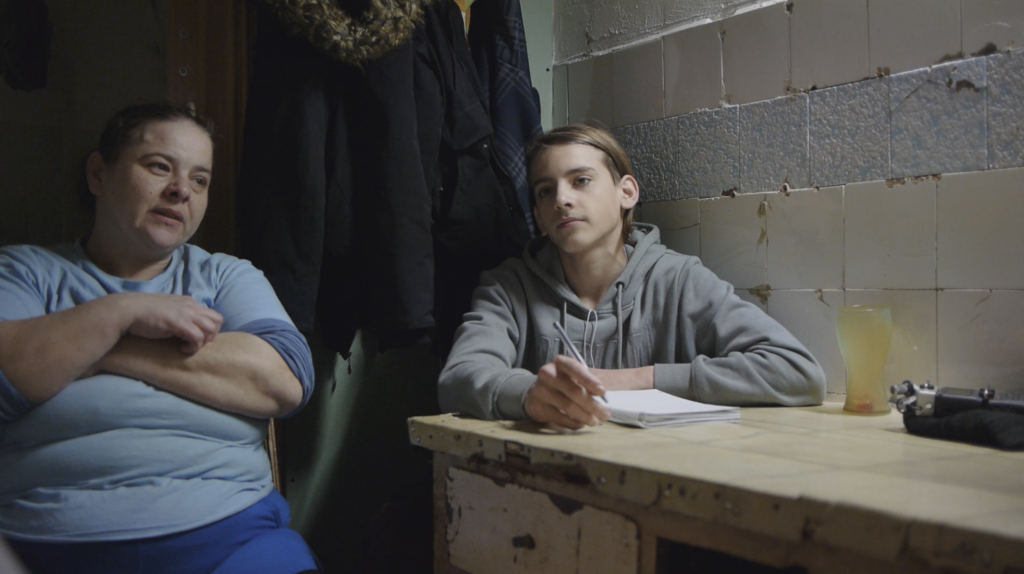
PC: Well, that’s really the question throughout, even though you do handle it quite subtly: Can this kid avoid something like this happening, where hijinks or anarchy turn into something serious? It shoves him very rudely from the stance of someone raging against the machine to a figure in which the greater society decides that it was inevitable once they learn his socio-economic background and family history with social services.
DM: At its most basic, we can imagine even someone like a mother watching this film and seeing the stunts that Sanyi pulls, waiting for something terrible to happen. But we were that wild at that age – and, in fact, most kids are. He was a talented acrobat as a kid. Yes, he could fall out of a tree or get hit by a car. But he didn’t. As a skateboarder, you fall sometimes so badly you think you’re going to die. But as a kid or a teenager, is it completely unavoidable for something serious to happen? I don’t have an answer. Universally, when your attention is unfocused or you’re not paying attention to what you’re doing, something can happen. When we were renovating the house and there was a framework and a goal, he was very focused and didn’t need to go crazy. Retrospectively yes, it is a very sensitive thing to hang out with kids, but I was a young kid too.
My mother has been a teacher for forty years and she once told me that this caring attitude that’s held in a household is something you’re born into. I feel we fueled Sanyi’s creativity. We did push him because we could see he was losing himself somehow because no one could see his talent – not the school, the social workers, his parents. All he ever heard from everywhere was that he was bad, stupid, guilty. It caused such confusion within him. On the other hand, that was balanced by our unconditional love. We wished, more than anything, even for the film, a happy ending. He was a hero and still is for us. If you take the accident out of the picture, we could still say he made it. He’s a tough grown-up. Many of us could say that we almost accidentally killed someone at some point in our lives – with a car or whatever. There was always risk, is what I’m trying to say, even when they were much younger.
They would sometimes just show up to our flat and it would be a weekday morning and I would have to ask Sanyi why he wasn’t in school. This put me in a position of either helping him play truant and agreeing to hang out and have fun – or telling him to get to school. The risk with the latter was that he wouldn’t go to school and end up on the streets by himself. I was not at all prepared for negotiating those boundaries with him. We were aware as well at the precarity of the family’s situation – where would they go if they got kicked out of their place? They’d come to us, and we weren’t prepared for that either.
BR: There was always the risk, as well, that we’d end up intervening too much into their lives. We thought a lot about this especially in the last couple of years of shooting with them. We had to look back at our presence and our actions retrospectively and ask ourselves if we hadn’t been there at all, would that accident still have happened? We weren’t sure at all if we should continue. In fact, our own mental health started to suffer from that because we had always felt really good about the process. There’s a legal risk at the moment, although minor, but that could impact a lot of things for the film going forward. Exhibiting the film to audiences could have an effect on the legal procedures. What happened enhanced the risk of “selling” someone’s life, a standard dilemma with documentary filmmaking. Weirdly, realizing financing after this incident got much easier, in fact.
DM: In some of the test screenings we did, opinions were very divided as everything is these days. The hope is that the love with which this film was made resonates with people. When I started this project, I was super keen on this world having to do with skateboarding and making public art. It’s my life, basically, how I grew up. Through the years, we developed other consciences about this responsibility. Béla Tarr would say that with filmmaking, he wanted to change the world. Although many films influenced my personality and viewpoint, I can’t really believe that this film, or any film, can make a real change in this world.
The troubles Sanyi caused and the documentation of that, his story, is possibly what he could give back, I suppose. But again, who am I to say this? Once it’s public, anything can happen. In Hungary, and many other places, there is such divisiveness, far right or far left, and it’s in the grey area of that divide that the film should be reflected upon. If it starts conversations between educational or social professionals, as well, and others who work in the same sort of system, there is that possibility too.
BR: We could say that this is a promotional video for people who come from solid family backgrounds, who grew up in warm, loving homes and offer that to those who lack that. If every circle of kids had someone like Sanyi amongst them, this world would be a better place. People might walk around with their eyes opened more widely in public spaces and look out for people they come across on the streets.
DM: Cultural and generational exchanges are at the core of this film, despite what happened. This was a completely organic encounter. We met on the street. What do you do when you see someone lying on the ground? Do you just continue to stare into your phone, alienated from everyone else around you? To make a documentary means you’re going to get very close to your subject. For me, to experience putting so much effort into the family, it involves all of my creative ideas and process. Bálint did this film called The Granny Project [2017] and it’s the same, the fueling up of someone’s presence with attention when we document with the camera. Yes, the camera does change things and that’s a whole other topic of discussion. But it deepens this sort of encounter. What looks dangerous from the outside is just a different kind of intimacy than you might be used to.
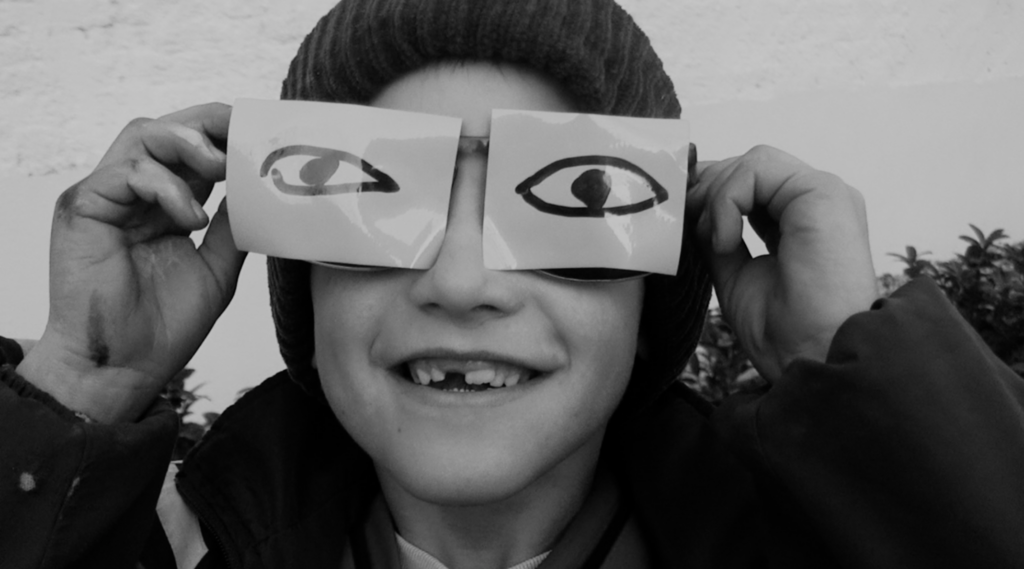
PC: Maybe KIX is the last unfiltered portrait of childhood? Everybody’s a brand now, honing their image, usually for profit, even young kids. Even though you both are still young, there’s a sort of cavernous generational divide that emerged during the decade of making this.
BR: Yes, but besides this ode to childhood or a more organic portrait in the way you’re describing, it’s also a social study of the society we grew up in. You really see how things work in Hungarian urban areas. I’m not a sociologist or anthropologist, but I can resonate with a lot of people that use the same language and understanding we used with Sanyi and his family.
DM: Education is really on the edge in Hungary, the whole system. I live in Denmark now. We would always hear about how great schools and the educational system were here in this country. I was just in Mälmo and I was at a skatepark that was part of a high school. The students can skateboard as part of their PE requirement. There are two groups: one for the skaters and one for filmmakers. There are free flowing art programs like the one we created on the streets in Budapest with those kids. Play is an essential part of childhood. What if the schools would be so good and the children so well-orientated? The kids then wouldn’t have any reason to rage against things they do not agree with? I don’t think so. Schools should teach kids how to stand up for their ideas. If things are far from ideal, with a counter-cultural attitude, there is a chance that you become stronger, but until there are equal chances for every kind of kid, it’s not really a fair fight. The educational and social systems in Hungary, the police force, all of these officials, create fear. When people need help, the reputation of these various authorities is so bad that people feel they shouldn’t call on them for assistance when they need it. I certainly wouldn’t have let Sanyi repeat a school year three times. Why? Let him find his way in life in his own way. Or not.
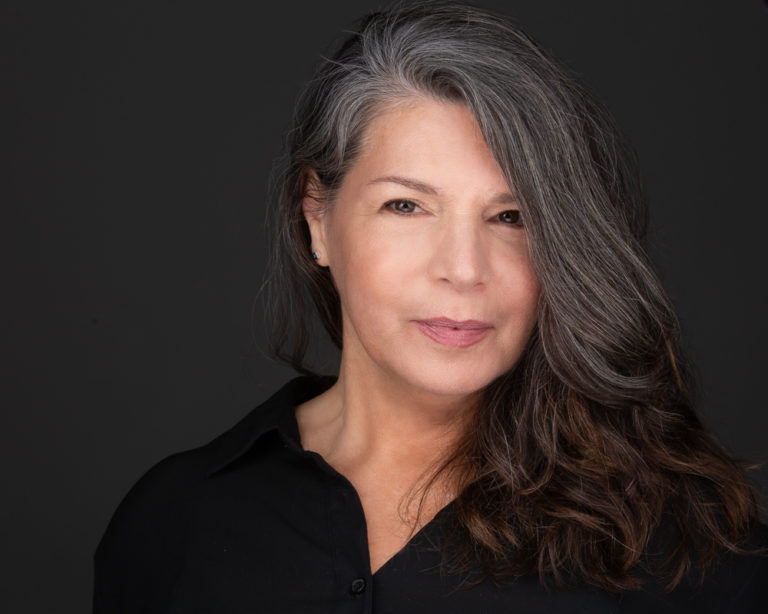
Pamela Cohn is a Helsinki-based critic, writer, film & video curator, story structure consultant, and festival moderator. She’s the author of Lucid Dreaming: Conversations with 29 Filmmakers(OR Books, New York & London, 2020), and co-producer and host of The Lucid Dreaming Podcast: Conversations on Cinema, Art & Moving Image. http://www.pamelacohn.com/
